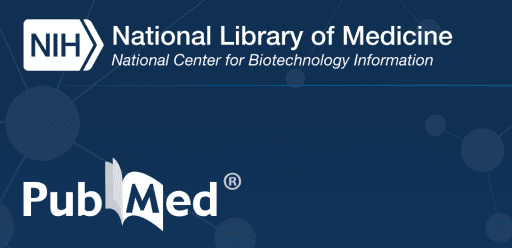Tai Chi is a martial art that has gained immense popularity across the world. This soft internal style martial art is known for its low-impact, meditative practice that offers physical, mental, and emotional benefits. In this blog post, we will explore the science of Tai Chi and examine the research and evidence that supports the many benefits of this ancient practice.
Physical Benefits of Tai Chi
Tai Chi is a low-impact form of exercise that can be practiced by people of all ages and fitness levels. Its practice has been found to improve cardiovascular health, balance, flexibility, and muscle strength. Various studies have shown that Tai Chi can reduce the risk of falls in older adults 1 and improve the strength of leg muscles 2. It has also been found to be beneficial for people with chronic conditions such as arthritis, chronic pain 3 and heart disease 4.
Mental and Emotional Benefits of Tai Chi
Tai Chi has been found to have numerous mental and emotional benefits. Many people practice Tai Chi to reduce stress and promote relaxation, and studies have shown that Tai Chi can be effective in achieving these goals. It has also been found to reduce symptoms of depression 5 and anxiety 6 in adults. Additionally, Tai Chi has been found to improve cognitive function and memory in older adults with mild cognitive impairment 7.
The Science of Tai Chi: How It Works
Tai Chi works through several mechanisms:
- It involves slow, deliberate movements that increase qi and blood flow to the muscles and organs, improving overall health and well-being.
- Tai Chi also involves a strong mind-body connection, with practitioners focusing on their breath and body movements, which can help reduce stress and promote relaxation.
- Tai Chi involves movements that improve posture and balance, which can reduce the risk of falls and improve overall physical health.
- Tai Chi has also been found to reduce levels of the stress hormone cortisol, which can help reduce symptoms of anxiety and depression 8.
Why You Should Try Tai Chi
The benefits of Tai Chi are clear, and the science supporting this practice is well-established. Tai Chi is a practice that can benefit people of all ages and fitness levels, whether you are looking to improve your physical health, reduce stress and anxiety, or simply try something new. When trying Tai Chi, it is important to look for a qualified instructor who has experience teaching Tai Chi to beginners. Additionally, you can practice Tai Chi on your own at home by using instructional videos or books. By incorporating Tai Chi into your daily routine, you can improve your overall health and well-being and enjoy a more relaxed, balanced, and fulfilling life.
References

[1] Li, F., Harmer, P., Fitzgerald, K., Eckstrom, E., Akers, L., Chou, L. S., & Pidgeon, D. (2012). Tai Chi and postural stability in patients with Parkinson’s disease. New England Journal of Medicine, 366(6), 511-519.
https://www.ncbi.nlm.nih.gov/pmc/articles/PMC3285459/
[2] Song, R., Lee, E. O., Lam, P., Bae, S. C., & Park, Y. J. (2003). Effects of tai chi exercise on pain, balance, muscle strength, and perceived difficulties in physical functioning in older women with osteoarthritis: a randomized clinical trial. The Journal of rheumatology, 30(9), 2039-2044.
https://pubmed.ncbi.nlm.nih.gov/12966613/
[3] Wang, C., Schmid, C. H., Fielding, R. A., Harvey, W. F., Reid, K. F., Price, L. L., … & McAlindon, T. (2016). Effect of tai chi versus aerobic exercise for fibromyalgia: comparative effectiveness randomized controlled trial. BMJ, 354, i3893.
https://pubmed.ncbi.nlm.nih.gov/29563100/
[4] Yeh, G. Y., McCarthy, E. P., Wayne, P. M., Stevenson, L. W., & Wood, M. J. (2011). Tai chi exercise in patients with chronic heart failure: a randomized clinical trial. Archives of internal medicine, 171(8), 750-757.
https://pubmed.ncbi.nlm.nih.gov/21518942/
[5] Lavretsky, H., Alstein, L. L., Olmstead, R. E., Ercoli, L. M., Riparetti-Brown, M., Cyr, N. S., … & Irwin, M. R. (2011). Complementary use of tai chi chih augments escitalopram treatment of geriatric depression: a randomized controlled trial. The American Journal of Geriatric Psychiatry, 19(10), 839-850.
https://pubmed.ncbi.nlm.nih.gov/21358389/
[6] Yeh, G. Y., Wang, C., Wayne, P. M., Phillips, R. S., & Tai, C. (2013). Tai chi exercise for patients with cardiovascular conditions and risk factors: a systematic review. Journal of the American College of Cardiology, 61(3), 253-262.
https://pubmed.ncbi.nlm.nih.gov/19471133/
[7] Lam, L. C., Chau, R. C., Wong, B. M., Fung, A. W., Tam, C. C., Leung, G. T., … & Chan, W. M. (2011). A 1-year randomized controlled trial comparing mind-body exercise (Tai Chi) with stretching and toning exercise on cognitive function in older Chinese adults at risk of cognitive decline. Journal of the American Medical Directors Association, 12(4), 336-341.
https://pubmed.ncbi.nlm.nih.gov/22579072/
[8] Lee, M. S., Pittler, M. H., & Ernst, E. (2007). Tai chi for osteoarthritis: a systematic review. Clinical Rheumatology, 26(3), 389-396.
https://pubmed.ncbi.nlm.nih.gov/17874172/
